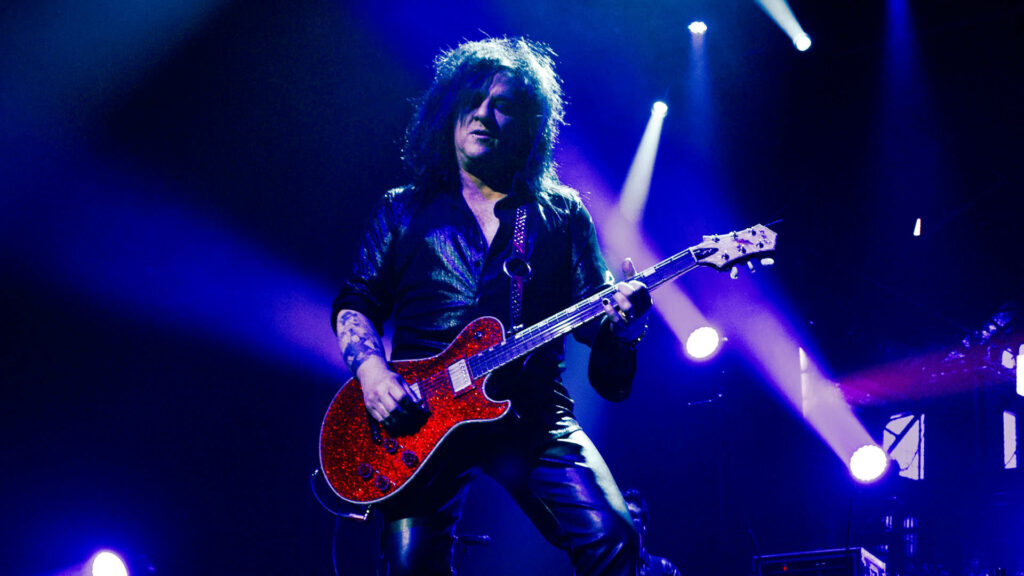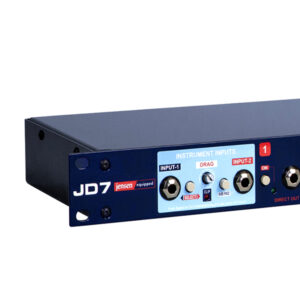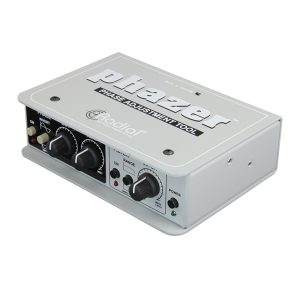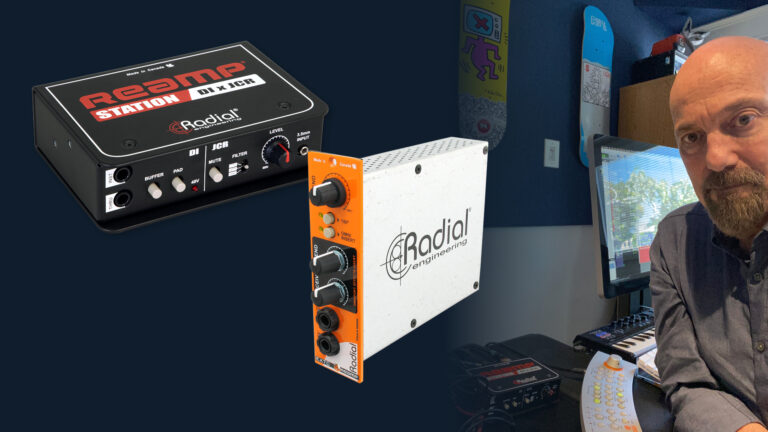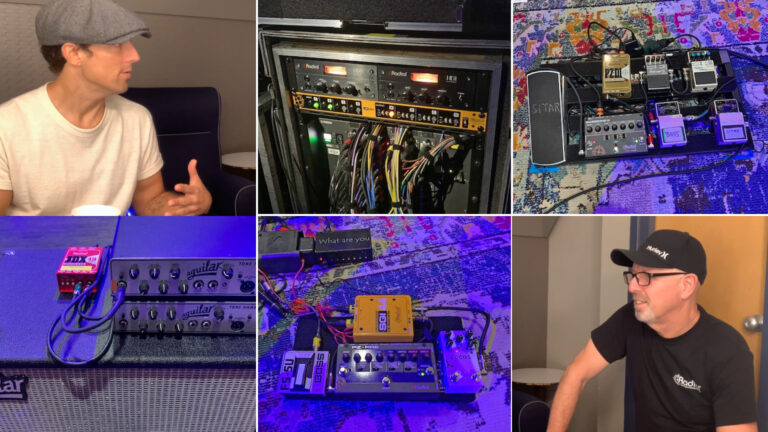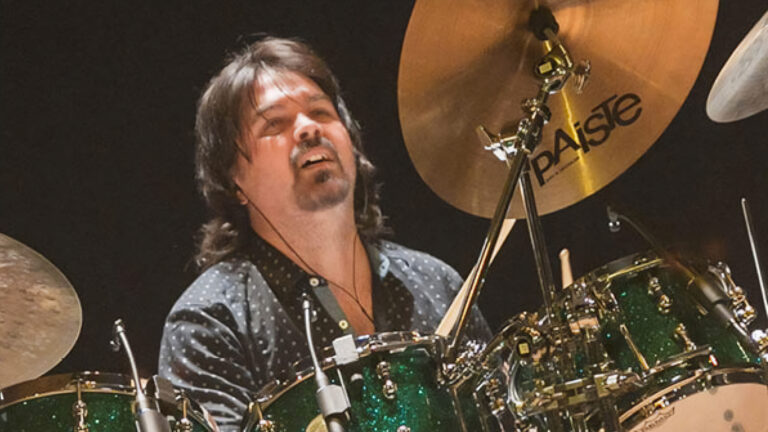In this series, we talk to some top names in the world of production, to learn about some of the different ways they use Reamping as part of their everyday process in the studio. Our interviewees share their insights into some of the original and creative ways they Reamp® that may not have occurred to you before…
This time, we spoke to Billy Idol guitarist, and songwriter, Steve Stevens
Radial: Talk a little bit about reamping and why you use it.
Steve: A lot of times I’ll get sent a song or a track or something, to work on. And I won’t know what the other instrumentation is or will be, exactly. They’ll send it to me maybe early in the process of songwriting.
So for me, it’s great to always have that clean DI guitar track, the guitar track so any sonic commitments can always be made later after all the other tracks are on there. So reamping gives me and the producer total flexibility in a lot of cases to Reamp®. Because maybe the initial guitar sound wasn’t quite the perfect thing. So you have that flexibility with reamping.
Radial: So as the track takes shape, the original tone of the guitar amp, or the guitar, may actually not be fitting anymore. So reamping gives you the chance to go in and maybe tweak that a little bit. Or adjust that to match the track a little bit better.
Steve: And also, a lot of times, if I’m demoing a song, I don’t really have the patience or the time to maybe set up the microphones or anything. So I’ll use an amp sim plugin or something, with the intention that okay, further down the road, we’re going to set up the proper amps and mic up and get our final take. So once again, reamping just gives me that security and the flexibility to tailor the track later on in the process.
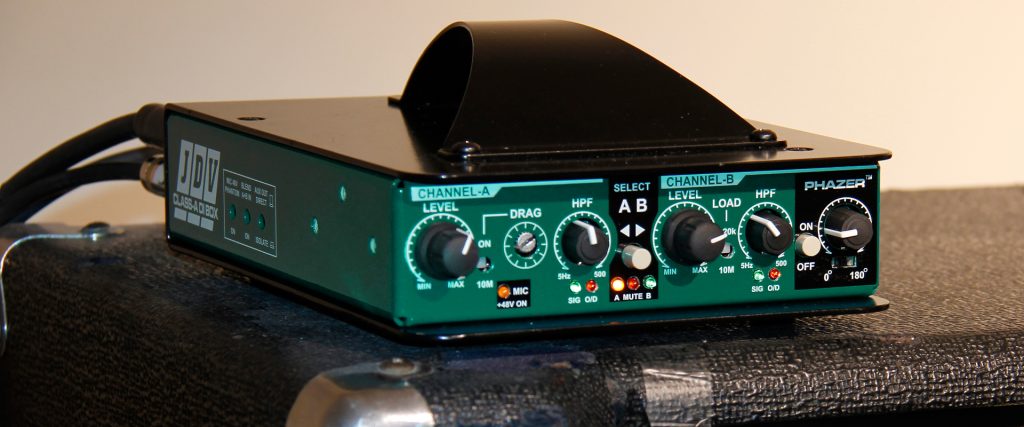
Radial: So you mentioned the plugins and the amp sims, as those have actually gotten better and in many cases they’re very good. Do you still tend to go back to the organic process of using the actual amp with reamping, and why do you do that after you print a DI guitar track?
Steve: Well, yeah, definitely, the technology has gotten better. Amp sims have gotten better. I think that what’s good about them is that they’re expedient. I work with a lot of singers, and you want to get the song together and work quickly. So just getting a plugin up is good enough to get the song together.
But at some point, what inevitably always happens is, we take the tracks into a big room, put our real drums on it, get our real guitars done. And we’re not paying the exorbitant price to be in the studio. We’re just there to capture our real-world stuff. But there’s no replicating the sound of not only micing a guitar cabinet, but you’re capturing part of the room.
And I have a home studio, but it’s certainly not like going into Henson or East West in LA or a place like that. So it’s nice to know that at some point in the process of making a record, I’m going to get some real-world guitar tones.
I have cabinets that I’ve used, amps, and cabinets that I’ve used from the beginning of my career. And some of them are quite special, late 60s Marshalls and my Friedmans and stuff. So as I mentioned, there’s nothing like getting in the studio and setting up a bunch of cabinets with amps. So yeah. I always print my DI guitar track.
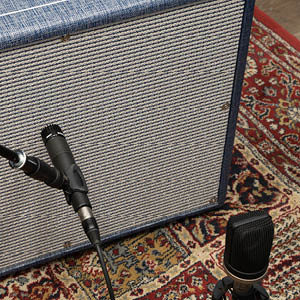
Radial: When you get your amp set up, what percentage of it is the actual, the micing process, moving around the mics, getting the mics in the right place? How much of that is part of the approach to reamping? Is that important? The mic placement and things like that?
Steve: Sure. I’ve done it enough times now, to know. There’s the tried-and-true SM-57 or Royer 121. As long as I have those two mics, I know what they should sound like with my amps and cabinets. And then I always use other microphones and print them just to have them and see. Sometimes for, let’s say a solo or something, I’ll put an ambient mic out into the room and capture a bit more of that. Usually, my rhythm guitar tracks are close mic’d though. I don’t want ambiance on those.
Radial: What about the Radial gear that you use?
Steve: When I’m in my home studio, the Radial JD7 is what enables me to get multiple different guitar tracks, and a DI track. If I am going to set up an amp and a cabinet in my home studio, the JD7 gives me the flexibility to print multi guitar tracks.

Radial: Is the JD7 the front-end of your rig setup?
Steve: Yes, my guitar always gets plugged into the JD7 first, and then I can split it out to whatever I want. I use a lot of Fractal gear. So sometimes that’ll go out to one of my Fractals, I’ll print that as well as my DI, as well as maybe a real world amp in the room.
It just depends on two factors: A, how much time I have to mess with guitar sounds. And B, how much I want to go down that road before knowing how much I want to commit to a particular sound. As I said, having that clean DI guitar track is really such a safety net, so I don’t have to worry too much about what’s getting printed at the time of recording.
When it comes down to it, as a co-songwriter with most of the artists that I work with, it’s really about getting things done expediently. Singers aren’t the most patient people in the world, and they want to get on with the song. So the amp sim enables me to get a decent guitar sound up quickly, but always knowing in the back of my head that I’m going to probably Reamp® the track.
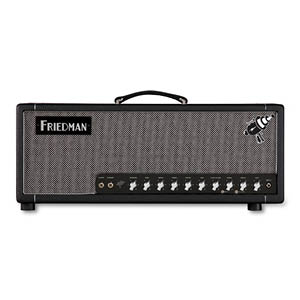
Radial: So when you first start, you’ve done your clean track, and you’re getting into the process of reamping Is there an amp or a particular sound that you tend to go to first, or does it really depend on the song and what the song requires?
Steve: It does depend on the song. I have a signature guitar amp with Dave Friedman, and that’s in my home studio. And what I strive for with that amp is a great classic rock and roll tone, based on my old Marshall Plexi’s, and it’s also got a super clean second channel in it. So I pretty much designed that amp to have the flexibility to get anything that I need out of it. And so that’s always set in my studio. That’s my go-to.
Radial: You mentioned mics earlier, what are your go-to mics, talk a little more about the micing part of reamping.
Steve: Most guitar players will say an SM-57 and a Royer 121 is the way to go. I have a decent collection of microphones, including a Byerdynamic M-160, which is the ribbon mic that Eddie Kramer used way back. And I’m not an engineer, I’m a guitarist, but I spend time learning about microphones because it’s so important to know about them for reamping. It’s really about trying different things. It’s trial and error, really. You put a mic up on a 4-by-12 cabinet and you go, “Oh, yeah. I like that.” And that’s how you learn. You go, “Oh, that’s a good combination.”
Radial: Do you ever have issues with phase and phase correction when recording with multiple mics?
Steve: Yes, and for that, I use the Radial Phazer phase correction box. I use that for my acoustic guitar because I always take a DI and a mic, and then I’ll kind of sweep that control to get them in phase. And I used to struggle with that all the time, wondering “Why doesn’t it sound good when I combine them?” And the Phazer solved that problem for me.
Radial: Back to the process of reamping. We talked a little bit earlier about the air, or the breathing of the cabinet when you mic it. Is that typically done with one mic, or do you experiment with maybe a mic close up and one in the room?
Steve: It could be many mics. A lot of times, I’ll leave it up to the producer and the engineer and they have their modes of working. And usually, I’m cool with always giving people the opportunity to try what they like. And then if it doesn’t quite match up, then I’ll suggest things. But I always gravitate towards an SM-57 and a Royer 121. The SM-57 captures all that kind of high-end energy, and it’s a classic. And also the Royer gives me the lower mids and the thump of the cabinet.
By and large, most of the rhythm guitar stuff ends up being close mic’d. And then for solos, we’ll kind of put up, sometimes a stereo pair in the room. The stereo pair captures the feeling of standing in the room. And especially if you’re in a great studio known for its room sound like East West or Henson. Capturing that room sound is essential. You’re not going to replicate that with an amp sim or a plugin. You get the real thing, that way.
Radial: Have you experimented with using foot pedals as part of your reamping process and setup? Is that something you’ve ever done or thought about doing?
Steve: I haven’t done that. I’m not opposed to it, but usually, if I’m going to use a pedal, I’m going to commit to that at the time of tracking. So that would already be on the DI track. Say, a wah pedal, or an overdrive pedal or something, that’ll already be on that DI track. I think guitar pedals, by and large, are going to go on that original DI track.
Radial: Any final words about Radial gear?
Steve: Thanks to Radial for making such great products. I think I’ve used Radial for 20 years or so. The stuff’s awesome. It really is. And as I said, that JD7 is the centerpiece of my rig. That’s where it starts, for me.

